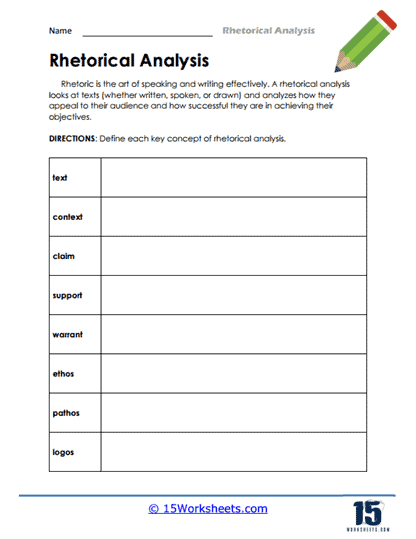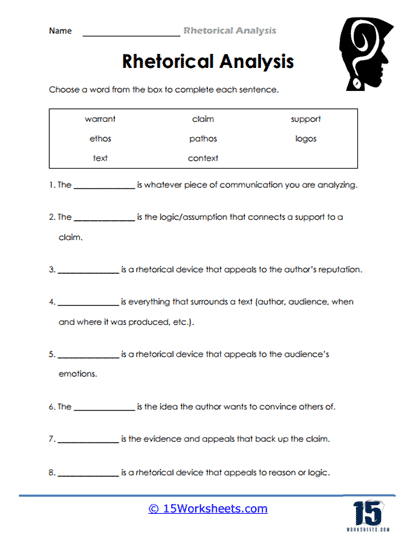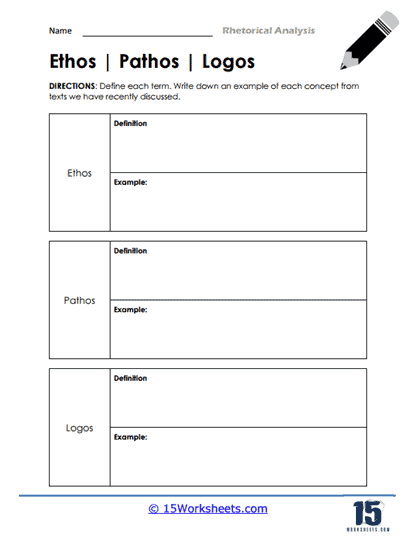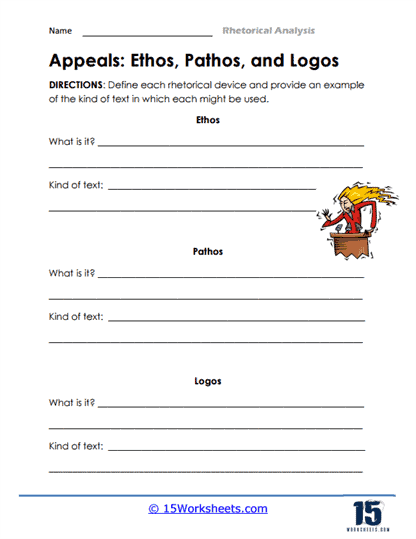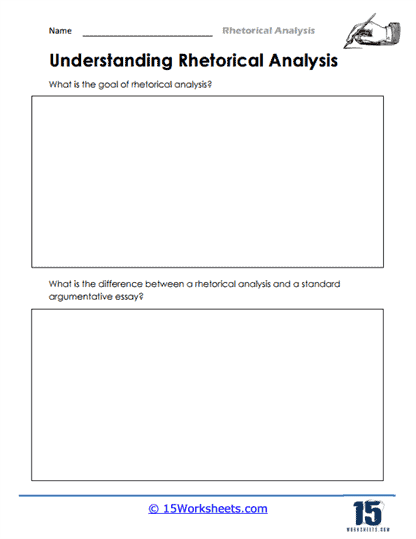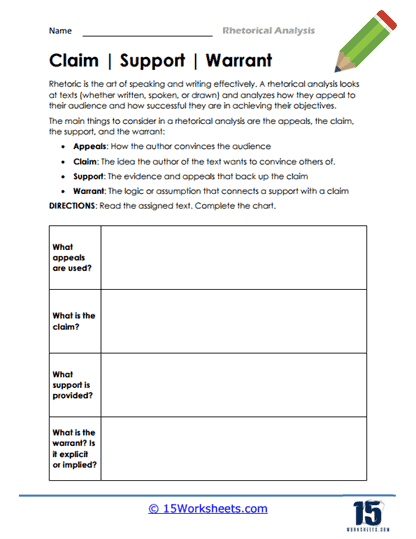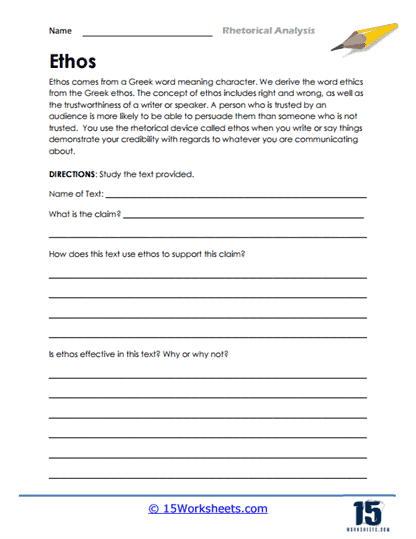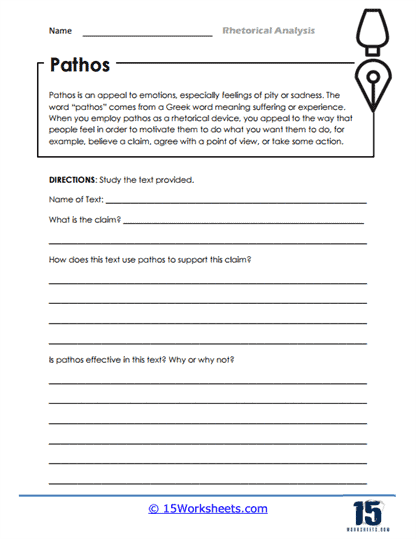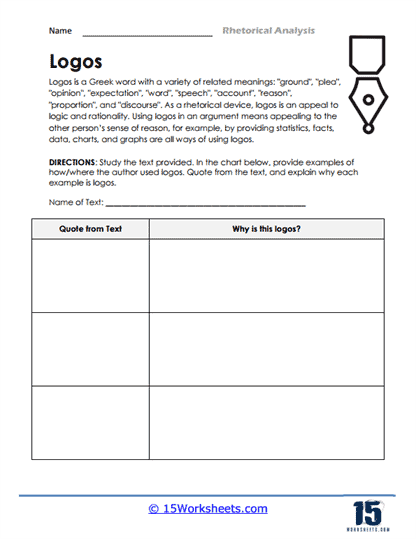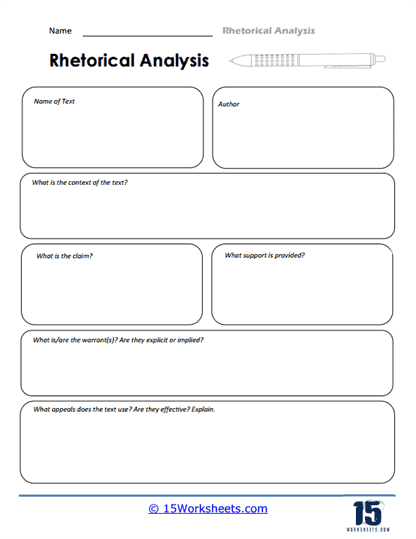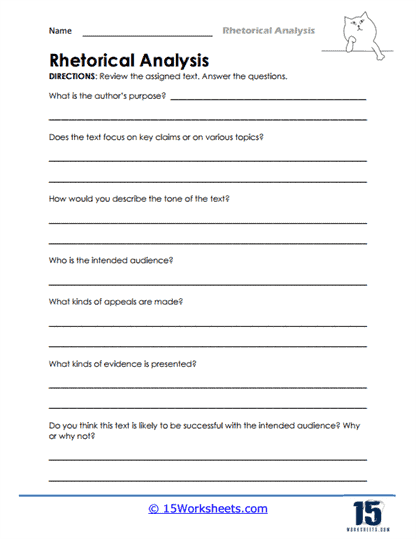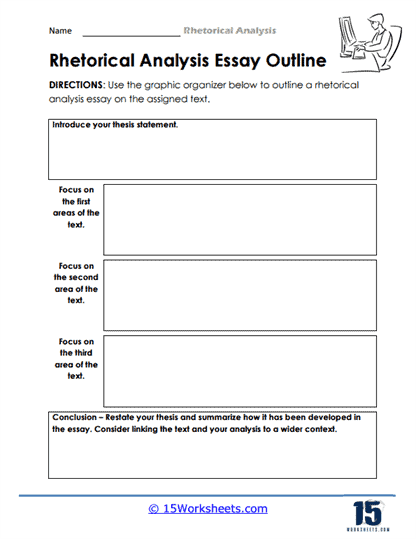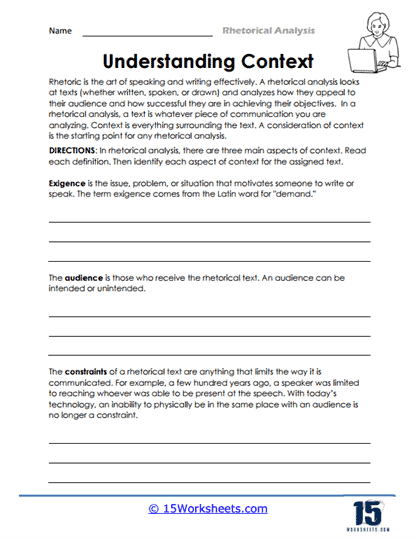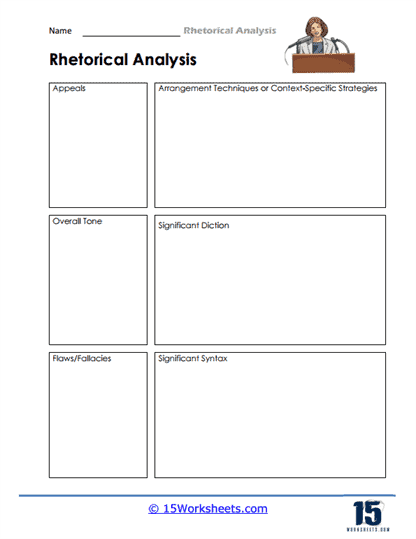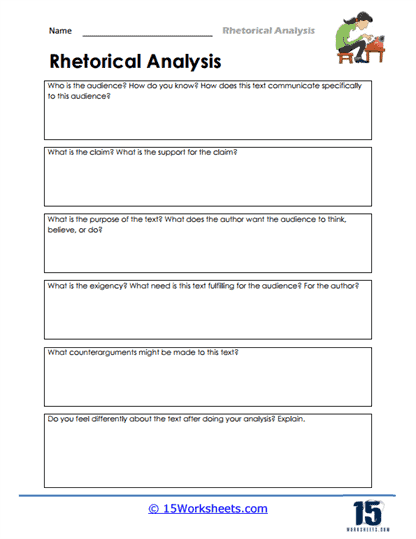Rhetorical Analysis Worksheets
All About These 15 Worksheets
This series of 15 worksheets is a comprehensive resource designed to empower students with the tools and strategies to conduct effective rhetorical analyses of texts. These worksheets guide students through the process of examining and evaluating the persuasive techniques, rhetorical devices, and strategies employed by authors to convey their messages effectively.
The writing prompts encourage students to engage in critical thinking, analytical reasoning, and persuasive writing. With a series of structured exercises, students learn how to dissect and analyze texts, identify persuasive elements, and develop well-supported arguments based on their observations. Through these worksheets, students will:
- Learn to identify and understand techniques such as ethos, pathos, logos, repetition, figurative language, imagery, and more;
- Support their analysis with evidence and examples from the text;
- Identify the appeals, claims, support provided, and warrants in an assigned text;
- Fully grasp the three main aspects of context;
- And reflect on their own rhetorical analysis skills and evaluate the effectiveness of their arguments.
This series is suitable for students across different grade levels and can be integrated into language arts classes, writing workshops, or critical thinking courses. By using these worksheets, teachers provide their students with a framework for developing strong analytical skills, critical thinking abilities, and persuasive writing techniques.
Through the exercises, students develop the ability to critically evaluate texts, understand the power of persuasive techniques, and effectively communicate their analysis in written form. In summary, the series nurtures students’ ability to think critically, make persuasive arguments, and engage with the complexities of written communication. This Rhetorical Analysis worksheets series equips students with the skills needed to navigate and analyze persuasive texts with confidence and precision.
What Is a Rhetorical Analysis?
A rhetorical analysis is a piece of writing that studies the author’s technique and intent rather than what they’ve written. It is one of the most prominent tasks on English language exams, and professionals, students, and academics often use it to analyze all forms of text. To complete your rhetorical analysis, you need to ask yourself a particular set of questions. These questions help you understand the purpose of a specific piece and whether it has successfully achieved that outcome.
Rhetorical Analysis: Understanding What It Means
In a rhetorical analysis, a writer critiques and examines the work of another artist, thinker, or writer. Instead of summarizing their work, you try to decipher how it was written. It’s a scholarly article often written by college or high school students. In this essay, the writer will give their critical analysis of the elements of the theme they have chosen to comment on.
This could be the author’s chosen segment of the audience, the language they’re using, how the argument is conveyed, and how different modes of persuasion are used (logic, ethics, and emotion).
How Do You Write a Rhetorical Analysis?
Writing a rhetorical analysis helps a person examine the effectiveness of a piece of text. It deepens their understanding of a topic they’re passionate about, and these essays usually follow the standard format (introduction, body, and conclusion). Here’s a step-by-step guide that teachers can share with their students:
1. Choose a Text You Want to Study
Try to review the work you’re analyzing as much as you can to understand the writer’s writing style and argument. In this stage, it’s almost obvious that you’re well-versed with the text and that you correctly and fully understand the point the writer is making. Try to choose (if you have the option) a topic that you’re passionate about.
2. Find the Main Points
It will help if you start by understanding who the author is trying to speak to. Why did the author craft this piece of content? Is it trying to persuade someone to do something or agree to a pre-existing narrative? Is the creator criticizing something? If needed, you can also create an outline through which you can address every point they’re making. You can also add your thoughts to these points.
3. Write the Introduction
This paragraph should be a summary of the piece you’re analyzing. It should give the reader sufficient background of the material, and it should be laid out in a finely crafted thesis statement.
4. Build An Analysis
Now, you’re going to use the body of your essay to analyze every point that the writer has made in their piece. Every paragraph is going to address a different point. Support each point with logical and concrete statements. Quotes work best.
5. Write a Conclusion
This part should reinstate the points you’re making. Give a final impression of the idea you’re communicating, and then finally discuss if the author successfully achieved their goal. Did they use the right strategies? What impact did they have on their audience? Has the writing made any changes in the world?

